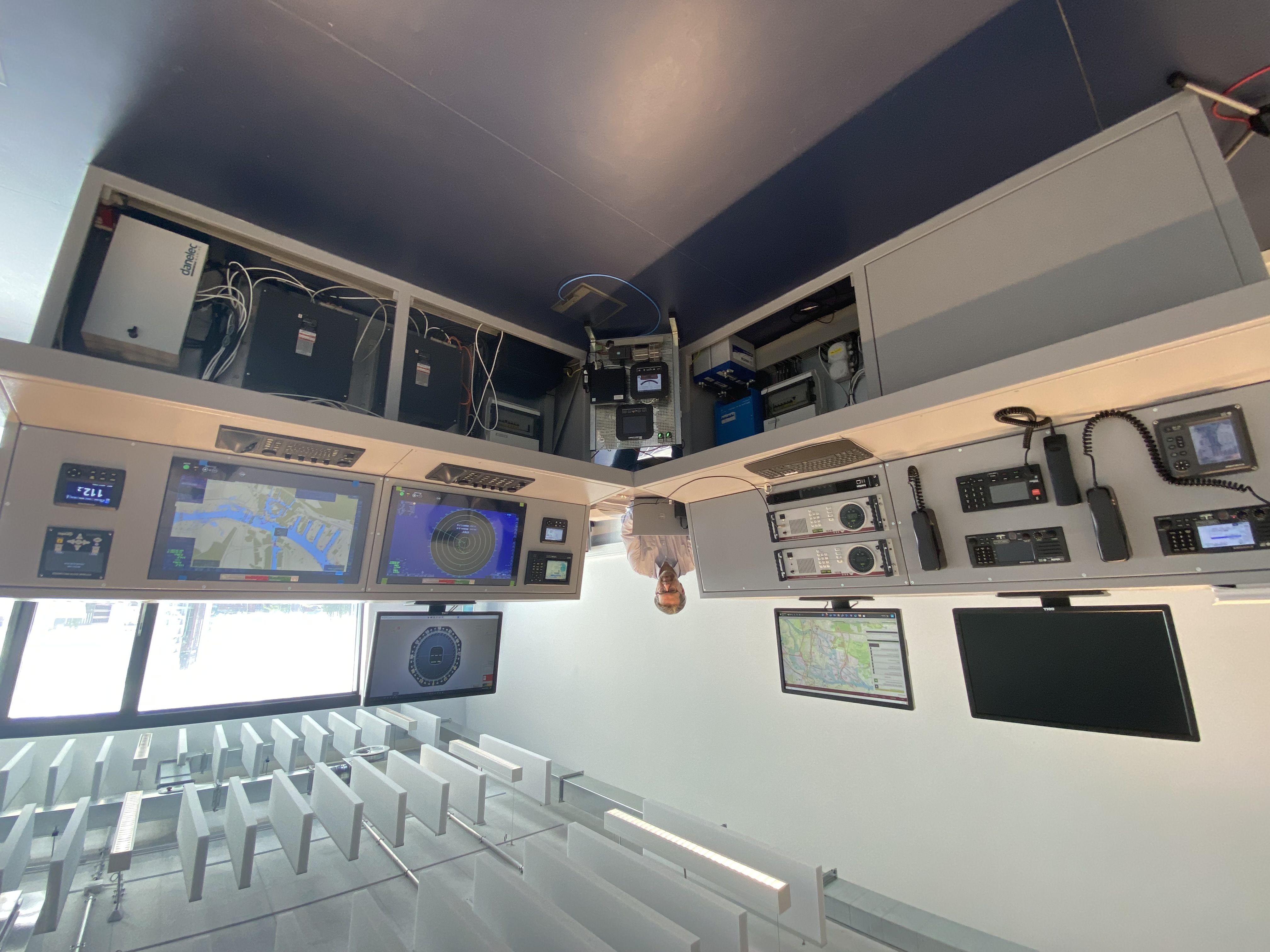The "Stone Ship": Real Applications for Industry and Research
The radio and bridge laboratory at the Fraunhofer CML combines two things in one: the antenna system and the classified bridge system, which makes the research building technically a real seagoing vessel - the stone ship in the middle of Harburg's inland port. What advantages does this have for partners and customers? What role does cybersecurity play in this context? This is explained to you by Jan Solle, who introduces you to his laboratory in the video.
The Challenge
The cyber risk in shipping has increased significantly in recent years. Ships are increasingly networked and therefore offer more gateways. This affects both computers and servers on board, i.e. information technology (IT), as well as operational technology (OT) such as radar, ECDIS and engine control. But it also includes private devices, which increasingly have a stable internet connection.
As the automation of systems on board increases, the possible consequences of a cyber attack are potentially greater. What's more, ships have a long service life. The software is often outdated and at the mercy of even long-known and preventable cyberattacks. Studies show that cyberattacks in the shipping industry have been increasing for years and are also causing ever higher costs, which are often not covered by insurance.
There are now also national and international regulations for cyber security in the shipping industry. Manufacturers and operators of ships are therefore faced with numerous questions:
- How can new and existing equipment be checked for cyber security?
- How can security risks be identified and the resilience of systems and different network topologies analysed?
- How can the necessary measures be developed, tested and practised in the event of a cyber attack?
The Solution
With our radio and bridge laboratory, we help to find answers to all these questions. It has a real ship's bridge facility, installed strictly in accordance with classification regulations. This is connected to an antenna platform on the roof, which supplies the bridge with real data around the clock.
Our bridge lab can easily be expanded with additional equipment and the network topology can be customised. We also offer software that can be used to easily simulate faults and cyberattacks on the bridge system. This means that devices can be analysed for their security and seafarers can be trained in a targeted manner.
Our Offer
We can check the cyber security of individual devices as well as the entire bridge and network configuration. The bridge setup can be customised to meet specific customer requirements. Individual devices can be added and linked to the existing infrastructure, including the associated antenna, so that we can work with real data at all times. We can also use this real-time data to improve the detection of cyber attacks on your systems.
Our offer goes even beyond the technical level: four out of five sailors feel that they are not sufficiently trained in digital technologies. We enable such training by carrying out cyber attacks in a realistic environment to practise how to deal with them in an emergency. We research which measures are best suited to warding off an ongoing attack and continuing to operate the ship safely. This also includes selecting measures that are easy for the seafarers to implement: We develop understandable visualisations of faults and link them to recommendations for action, rather than simply displaying another alarm.
In our laboratory, they can "safely" attack your hardware and software - without jeopardising your data or your ship.
 Fraunhofer Center for Maritime Logistics and Services
Fraunhofer Center for Maritime Logistics and Services